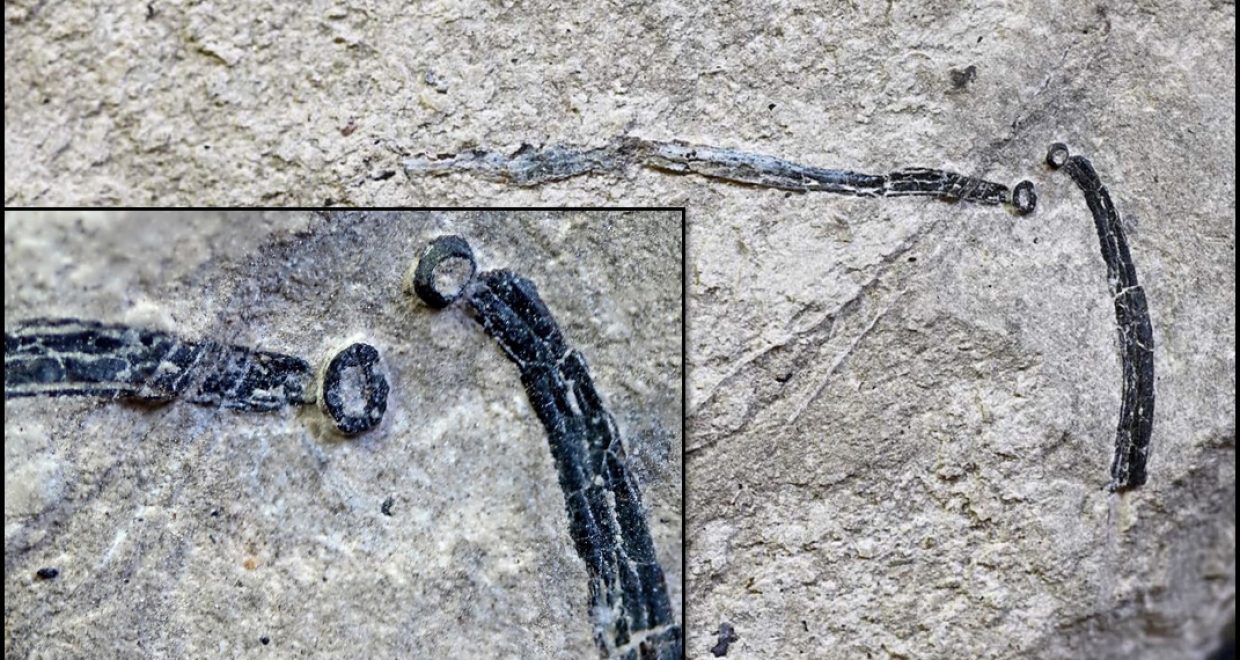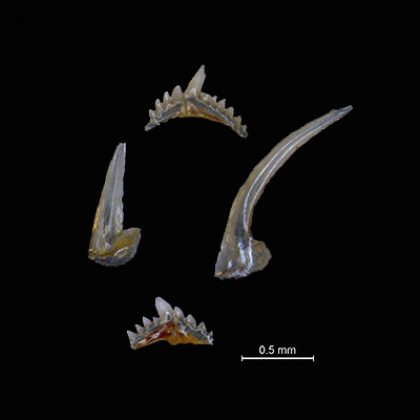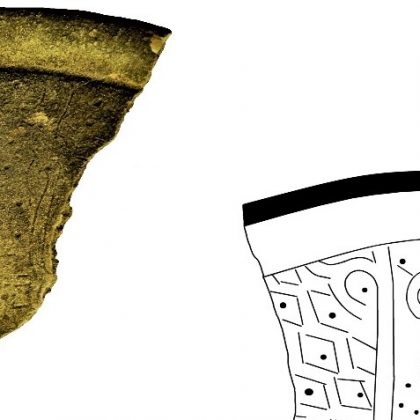First Report of Sphenothallus Hall (Cnidaria, Medusozoa) from the Mesozoic Erathem (Upper Triassic, Slovenia)
Palaeontologists have known the fossil rich laminated platy limestones from Kozja dnina (Slovenia) since the beginning of the 20th century. Locality of Kozja dnina is situated in the Vrata valley in the north-eastern part of the Julian Alps.
Sphenothallus specimens were collected from thin, gray, laminated lime mudstones in the Kozja dnina Member of the Martuljek Limestone (Late Triassic). The Late Carnian (Tuvalian) age of the section that yielded the specimens is based on conodont assemblages (Quadralella polygnathiformis Zone). The section at Kozja dnina is approximately 80 m thick and represents a deep water paleoenvironment. The strata were deposited in an interplatform basin, where anoxic conditions and rapid sedimentation enabled the exceptional preservation of both invertebrate and vertebrate fossils in this Konservat Lagerstatte. In addition to Sphenothallus, the Kozja dnina limestones also contain well preserved fauna of bivalves, brachiopods, echinoids, crinoids, asteroids, ammonites, belemnites, scleractinian corals, shrimp, lobsters, thylacocephalans, and fishes.
The specimens of Sphenothallus carniolica (Kolar-Jurkovšek and Jurkovšek, 1997) were originally described under the name Valvasoria carniolica n. gen. n. sp. (Kolar-Jurkovšek and Jurkovšek, 1997), which was interpreted as a tubiculous worm of possible nematode or sipunculid affinities. Newly discovered material, exhibiting diagnostic features such as distinct longitudinal thickenings of the main tube, attachment discs and observed plywood microstructures of the cuticle, allow us to reassign the specimens to Shenothallus Hall, 1874.
Sphenothallus is one of the most widely distributed and longest ranging genera in the fossil record, has been documented from all systems of the Paleozoic except the Permian. At present the first appearance of this epibenthic, polypoid medusozoan cnidarian lies in Cambrian Stage 3, while the previously known youngest occurrences are in the Pennsylvanian System. Sphenothallus has been found in numerous formations on all continents except Australia and Antarctica. It occurs in a variety of marine facies ranging from shallow nearshore to deep offshore and has even been found in strata of coastal lacustrine origin.
This is thus the first report of Sphenothallus from the Mesozoic Erathem. Therefore, Sphenothallus is now established as a long-ranging medusozoan cnidarian which, together with conulariid scyphozoans, survived the End Permian Mass Extinction Event.
The present discovery extends the known age range of Sphenothallus by approximately 80 million years, across the critical Permian-Triassic boundary. Additionally, since Sphenothallus has not yet been documented from any part of the Permian System, it may be a Lazarus taxon. However, we predict that the existence of Sphenothallus of Permian age, will be confirmed and that additional discoveries of Triassic and maybe even younger Sphenothallus will be made.




The paper “ First Report of Sphenothallus Hall (Cnidaria, Medusozoa) from the Mesozoic Erathem (Upper Triassic, Slovenia)” by Heyo Van Iten, Rok Gašparič, Tomaž Hitij, Tea Kolar-Jurkovšek and Bogdan Jurkovšek, published in Journal of Paleontology, is available free for one month.






